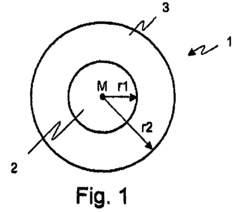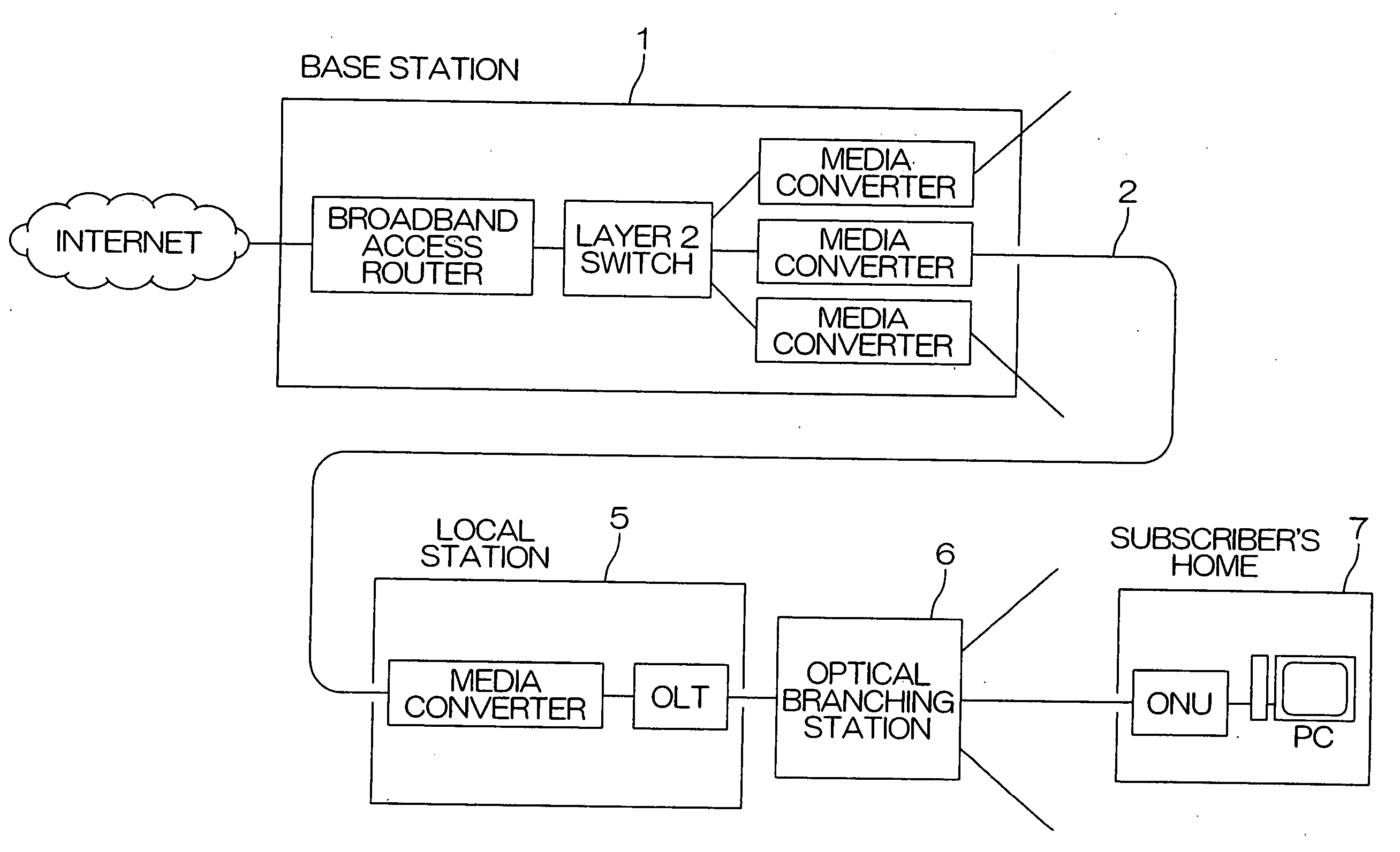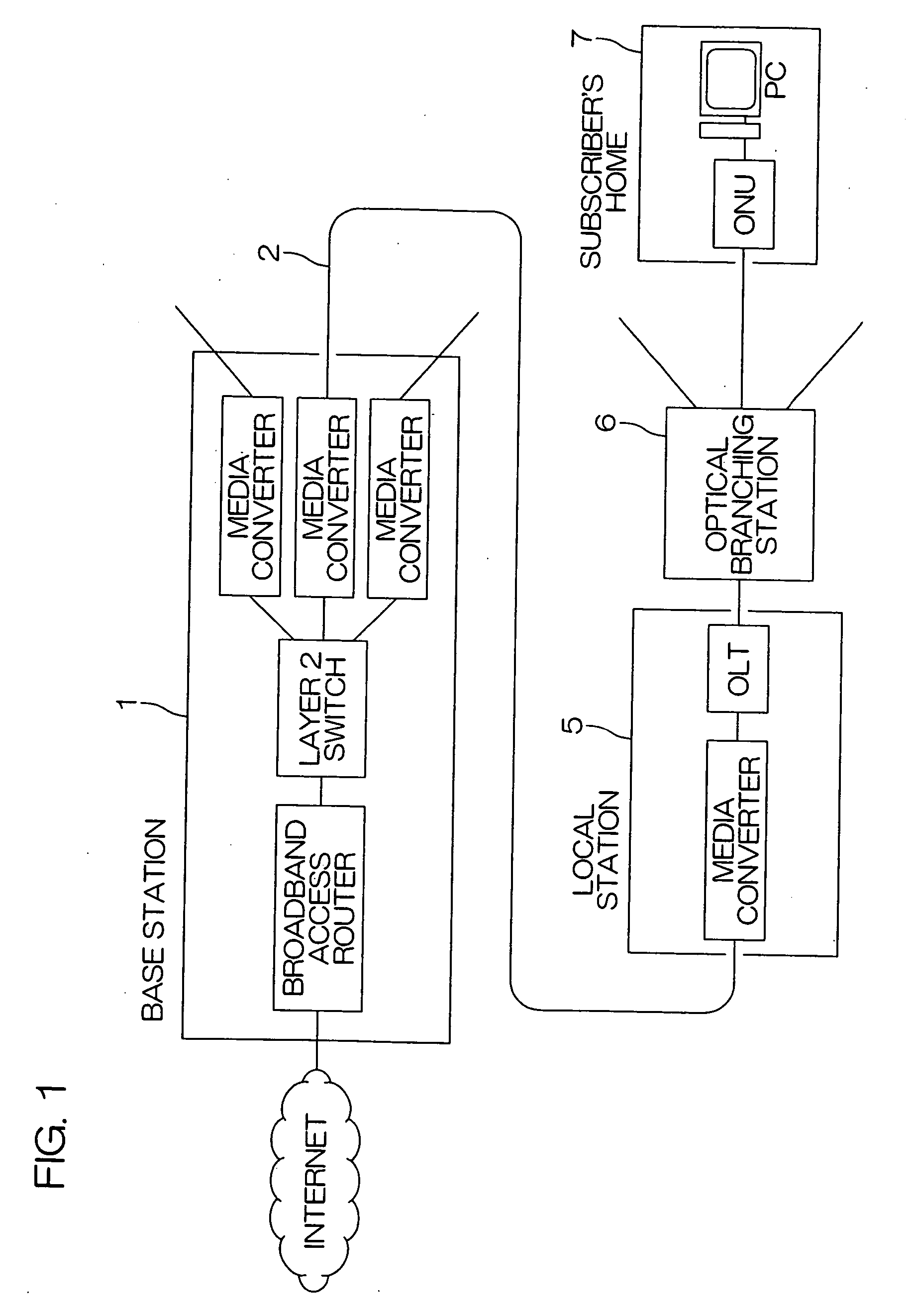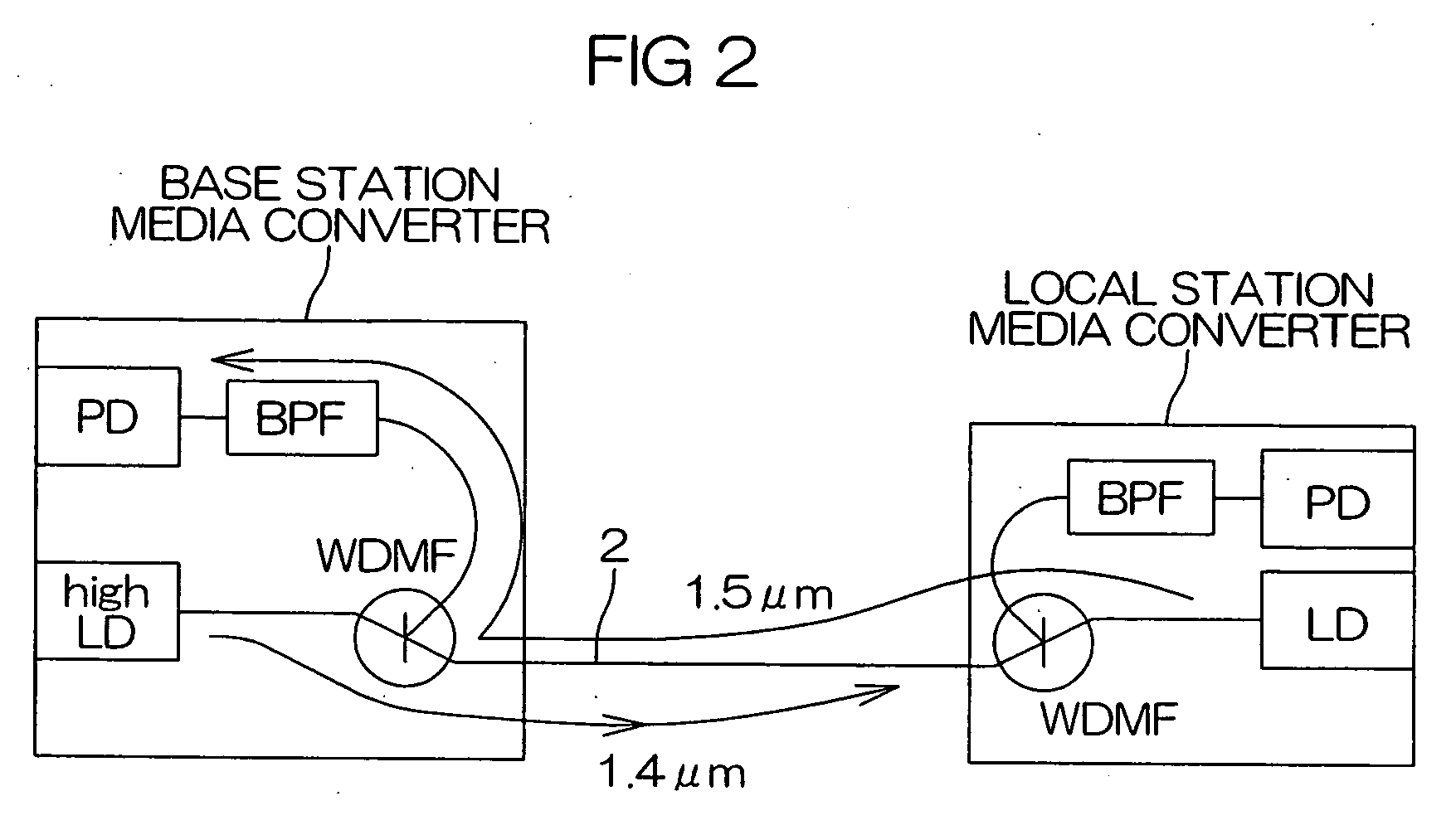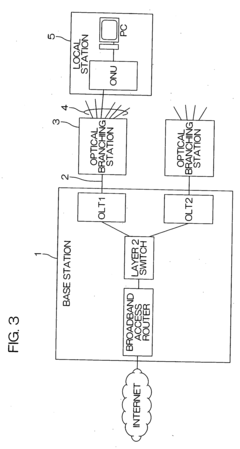How 2-Methylpentane Enhances Fiber Optic Communication Systems
JUL 25, 20259 MIN READ
Generate Your Research Report Instantly with AI Agent
Patsnap Eureka helps you evaluate technical feasibility & market potential.
2-Methylpentane in Fiber Optics: Background and Objectives
Fiber optic communication systems have revolutionized the telecommunications industry, enabling high-speed data transmission over long distances. The quest for enhancing these systems has led researchers to explore various materials and techniques. One such promising avenue is the use of 2-Methylpentane, an organic compound that has shown potential in improving the performance of fiber optic networks.
The development of fiber optic technology can be traced back to the 1960s, with significant advancements occurring in the following decades. As the demand for faster and more efficient data transmission grew, so did the need for innovative solutions to overcome existing limitations. The introduction of 2-Methylpentane into this field represents a novel approach to addressing some of these challenges.
2-Methylpentane, an isomer of hexane, is a colorless liquid with unique properties that make it suitable for use in optical systems. Its low viscosity, high refractive index, and excellent thermal stability have attracted the attention of researchers in the field of photonics. The exploration of this compound in fiber optic applications aims to leverage these characteristics to enhance signal transmission and reduce losses.
The primary objective of incorporating 2-Methylpentane into fiber optic communication systems is to improve their overall performance. This includes increasing data transmission rates, reducing signal attenuation, and enhancing the system's resilience to environmental factors. By achieving these goals, 2-Methylpentane could potentially extend the capabilities of existing fiber optic networks and pave the way for new applications.
Another key objective is to investigate the long-term stability and compatibility of 2-Methylpentane with current fiber optic infrastructure. This involves studying its interaction with various optical materials, its behavior under different operating conditions, and its impact on the longevity of fiber optic components. Understanding these aspects is crucial for determining the feasibility of widespread adoption in real-world applications.
Furthermore, researchers aim to explore the potential of 2-Methylpentane in addressing specific challenges in fiber optic communication, such as reducing chromatic dispersion and minimizing nonlinear effects. These phenomena can limit the performance of high-speed optical networks, and finding effective solutions could lead to significant improvements in data transmission capabilities.
As the field of fiber optic communication continues to evolve, the integration of novel materials like 2-Methylpentane represents an exciting frontier. The ongoing research in this area not only seeks to enhance current technologies but also aims to push the boundaries of what is possible in optical communication systems. The outcomes of these investigations could have far-reaching implications for the future of telecommunications, data centers, and other industries reliant on high-speed, high-capacity data transmission.
The development of fiber optic technology can be traced back to the 1960s, with significant advancements occurring in the following decades. As the demand for faster and more efficient data transmission grew, so did the need for innovative solutions to overcome existing limitations. The introduction of 2-Methylpentane into this field represents a novel approach to addressing some of these challenges.
2-Methylpentane, an isomer of hexane, is a colorless liquid with unique properties that make it suitable for use in optical systems. Its low viscosity, high refractive index, and excellent thermal stability have attracted the attention of researchers in the field of photonics. The exploration of this compound in fiber optic applications aims to leverage these characteristics to enhance signal transmission and reduce losses.
The primary objective of incorporating 2-Methylpentane into fiber optic communication systems is to improve their overall performance. This includes increasing data transmission rates, reducing signal attenuation, and enhancing the system's resilience to environmental factors. By achieving these goals, 2-Methylpentane could potentially extend the capabilities of existing fiber optic networks and pave the way for new applications.
Another key objective is to investigate the long-term stability and compatibility of 2-Methylpentane with current fiber optic infrastructure. This involves studying its interaction with various optical materials, its behavior under different operating conditions, and its impact on the longevity of fiber optic components. Understanding these aspects is crucial for determining the feasibility of widespread adoption in real-world applications.
Furthermore, researchers aim to explore the potential of 2-Methylpentane in addressing specific challenges in fiber optic communication, such as reducing chromatic dispersion and minimizing nonlinear effects. These phenomena can limit the performance of high-speed optical networks, and finding effective solutions could lead to significant improvements in data transmission capabilities.
As the field of fiber optic communication continues to evolve, the integration of novel materials like 2-Methylpentane represents an exciting frontier. The ongoing research in this area not only seeks to enhance current technologies but also aims to push the boundaries of what is possible in optical communication systems. The outcomes of these investigations could have far-reaching implications for the future of telecommunications, data centers, and other industries reliant on high-speed, high-capacity data transmission.
Market Analysis for Enhanced Fiber Optic Systems
The market for enhanced fiber optic communication systems has been experiencing significant growth, driven by the increasing demand for high-speed data transmission and the expansion of telecommunications infrastructure worldwide. The integration of 2-Methylpentane as a potential enhancer in these systems has sparked interest among industry players and researchers alike, opening up new possibilities for improved performance and efficiency.
The global fiber optic market is projected to continue its upward trajectory, with a compound annual growth rate (CAGR) expected to remain strong over the next five years. This growth is primarily fueled by the rising adoption of 5G networks, the proliferation of Internet of Things (IoT) devices, and the increasing need for high-bandwidth applications in various sectors, including healthcare, finance, and entertainment.
The demand for enhanced fiber optic systems is particularly pronounced in regions with rapidly developing digital infrastructure, such as Asia-Pacific and parts of Africa and Latin America. These areas are witnessing substantial investments in telecommunications networks to support their growing economies and digital transformation initiatives.
In developed markets like North America and Europe, the focus is shifting towards upgrading existing fiber optic networks to accommodate higher data transmission speeds and lower latency requirements. This trend is driven by the surge in cloud computing, edge computing, and the need for real-time data processing in emerging technologies such as autonomous vehicles and smart cities.
The potential introduction of 2-Methylpentane as an enhancer in fiber optic systems could address several key market demands. These include the need for increased transmission distances without signal degradation, improved signal clarity, and reduced power consumption. Such advancements could lead to cost savings for network operators and improved service quality for end-users.
Industry analysts predict that if 2-Methylpentane-enhanced fiber optic systems prove successful in field trials and gain regulatory approvals, they could capture a significant share of the market within the next decade. This technology could be particularly attractive for long-haul fiber optic networks, data centers, and submarine cable systems, where performance improvements can yield substantial economic benefits.
However, the market adoption of this technology will depend on several factors, including its cost-effectiveness compared to existing solutions, the ease of integration with current infrastructure, and its long-term reliability. Additionally, environmental considerations and regulatory compliance will play crucial roles in determining the widespread acceptance of 2-Methylpentane in fiber optic systems.
As the telecommunications industry continues to evolve, the market for enhanced fiber optic systems remains highly competitive. Established players and new entrants alike are investing heavily in research and development to gain a technological edge. The successful commercialization of 2-Methylpentane-enhanced fiber optic systems could potentially disrupt the market, offering new opportunities for companies to differentiate their products and services.
The global fiber optic market is projected to continue its upward trajectory, with a compound annual growth rate (CAGR) expected to remain strong over the next five years. This growth is primarily fueled by the rising adoption of 5G networks, the proliferation of Internet of Things (IoT) devices, and the increasing need for high-bandwidth applications in various sectors, including healthcare, finance, and entertainment.
The demand for enhanced fiber optic systems is particularly pronounced in regions with rapidly developing digital infrastructure, such as Asia-Pacific and parts of Africa and Latin America. These areas are witnessing substantial investments in telecommunications networks to support their growing economies and digital transformation initiatives.
In developed markets like North America and Europe, the focus is shifting towards upgrading existing fiber optic networks to accommodate higher data transmission speeds and lower latency requirements. This trend is driven by the surge in cloud computing, edge computing, and the need for real-time data processing in emerging technologies such as autonomous vehicles and smart cities.
The potential introduction of 2-Methylpentane as an enhancer in fiber optic systems could address several key market demands. These include the need for increased transmission distances without signal degradation, improved signal clarity, and reduced power consumption. Such advancements could lead to cost savings for network operators and improved service quality for end-users.
Industry analysts predict that if 2-Methylpentane-enhanced fiber optic systems prove successful in field trials and gain regulatory approvals, they could capture a significant share of the market within the next decade. This technology could be particularly attractive for long-haul fiber optic networks, data centers, and submarine cable systems, where performance improvements can yield substantial economic benefits.
However, the market adoption of this technology will depend on several factors, including its cost-effectiveness compared to existing solutions, the ease of integration with current infrastructure, and its long-term reliability. Additionally, environmental considerations and regulatory compliance will play crucial roles in determining the widespread acceptance of 2-Methylpentane in fiber optic systems.
As the telecommunications industry continues to evolve, the market for enhanced fiber optic systems remains highly competitive. Established players and new entrants alike are investing heavily in research and development to gain a technological edge. The successful commercialization of 2-Methylpentane-enhanced fiber optic systems could potentially disrupt the market, offering new opportunities for companies to differentiate their products and services.
Current Challenges in Fiber Optic Communication
Fiber optic communication systems have revolutionized global connectivity, offering high-speed data transmission over long distances. However, as the demand for bandwidth continues to grow exponentially, these systems face several significant challenges that limit their performance and scalability.
One of the primary challenges is signal attenuation, which occurs as light travels through the fiber. Despite the use of low-loss silica fibers, signal strength still diminishes over long distances, necessitating the use of repeaters or amplifiers. This not only increases system complexity but also adds to the overall cost of infrastructure.
Chromatic dispersion presents another hurdle, causing different wavelengths of light to travel at slightly different speeds. This phenomenon leads to pulse broadening and intersymbol interference, ultimately limiting the data transmission rate and distance. While dispersion-compensating fibers and electronic dispersion compensation techniques exist, they add complexity and cost to the system.
Nonlinear effects, such as self-phase modulation and cross-phase modulation, become more pronounced at higher power levels and data rates. These effects can distort the signal and create interference between channels in wavelength-division multiplexed systems, limiting the maximum transmission capacity.
The ever-increasing demand for higher data rates pushes the limits of current modulation schemes and detection technologies. Advanced modulation formats like quadrature amplitude modulation (QAM) require more sophisticated transmitters and receivers, which can be challenging to implement at scale.
Polarization-dependent effects, including polarization mode dispersion and polarization-dependent loss, can cause signal degradation and limit transmission speeds. These effects are particularly challenging to mitigate as they can vary over time due to environmental factors.
As data rates increase, the need for faster and more efficient signal processing becomes critical. Current electronic processing technologies are approaching their limits, creating a bottleneck in high-speed fiber optic systems. This challenge calls for innovations in both electronic and optical signal processing techniques.
Lastly, the integration of fiber optic systems with emerging technologies, such as 5G networks and the Internet of Things, presents new challenges in terms of system design, network architecture, and interoperability. Ensuring seamless integration while maintaining high performance and reliability is a complex task that requires ongoing research and development efforts.
One of the primary challenges is signal attenuation, which occurs as light travels through the fiber. Despite the use of low-loss silica fibers, signal strength still diminishes over long distances, necessitating the use of repeaters or amplifiers. This not only increases system complexity but also adds to the overall cost of infrastructure.
Chromatic dispersion presents another hurdle, causing different wavelengths of light to travel at slightly different speeds. This phenomenon leads to pulse broadening and intersymbol interference, ultimately limiting the data transmission rate and distance. While dispersion-compensating fibers and electronic dispersion compensation techniques exist, they add complexity and cost to the system.
Nonlinear effects, such as self-phase modulation and cross-phase modulation, become more pronounced at higher power levels and data rates. These effects can distort the signal and create interference between channels in wavelength-division multiplexed systems, limiting the maximum transmission capacity.
The ever-increasing demand for higher data rates pushes the limits of current modulation schemes and detection technologies. Advanced modulation formats like quadrature amplitude modulation (QAM) require more sophisticated transmitters and receivers, which can be challenging to implement at scale.
Polarization-dependent effects, including polarization mode dispersion and polarization-dependent loss, can cause signal degradation and limit transmission speeds. These effects are particularly challenging to mitigate as they can vary over time due to environmental factors.
As data rates increase, the need for faster and more efficient signal processing becomes critical. Current electronic processing technologies are approaching their limits, creating a bottleneck in high-speed fiber optic systems. This challenge calls for innovations in both electronic and optical signal processing techniques.
Lastly, the integration of fiber optic systems with emerging technologies, such as 5G networks and the Internet of Things, presents new challenges in terms of system design, network architecture, and interoperability. Ensuring seamless integration while maintaining high performance and reliability is a complex task that requires ongoing research and development efforts.
2-Methylpentane Integration Methods
01 Use in polymer production
2-Methylpentane is utilized as a component in polymer production processes. It can serve as a solvent or reactant in various polymerization reactions, potentially enhancing the properties of the resulting polymers or improving the efficiency of the production process.- Use in polymer production: 2-Methylpentane is utilized as a component in polymer production processes. It can serve as a solvent or reactant in various polymerization reactions, potentially enhancing the properties of the resulting polymers or improving the efficiency of the production process.
- Application in fuel compositions: 2-Methylpentane is employed as an additive in fuel compositions. Its inclusion can potentially enhance fuel properties such as octane rating, combustion efficiency, or cold-start performance in internal combustion engines.
- Role in chemical synthesis: 2-Methylpentane serves as a precursor or intermediate in various chemical synthesis routes. It can be used to produce other valuable chemicals or as a building block in the synthesis of more complex organic compounds.
- Use in separation processes: 2-Methylpentane is utilized in separation and purification processes. It can act as an extractant or solvent in liquid-liquid extraction, azeotropic distillation, or other separation techniques to isolate or purify target compounds.
- Application in coating formulations: 2-Methylpentane is incorporated into coating formulations. Its inclusion can potentially improve the application properties, drying characteristics, or performance of various types of coatings, including paints, varnishes, or specialty coatings.
02 Application in fuel compositions
2-Methylpentane is employed as an additive or component in fuel compositions. Its inclusion may enhance fuel properties such as octane rating, combustion efficiency, or cold-start performance in internal combustion engines.Expand Specific Solutions03 Role in chemical synthesis
2-Methylpentane serves as a precursor or intermediate in various chemical synthesis routes. It can be used to produce other valuable chemicals or as a building block in the synthesis of more complex organic compounds.Expand Specific Solutions04 Use in separation processes
2-Methylpentane is utilized in separation and purification processes, particularly in the petrochemical industry. It may be employed as an extractant or in distillation processes to separate and purify hydrocarbon mixtures.Expand Specific Solutions05 Application in coating formulations
2-Methylpentane is incorporated into coating formulations as a solvent or additive. Its inclusion may enhance properties such as drying time, film formation, or adhesion in various types of coatings, including paints and varnishes.Expand Specific Solutions
Key Players in Fiber Optic Industry
The development of 2-Methylpentane for enhancing fiber optic communication systems is in its early stages, with the market still emerging. The technology's potential to improve signal transmission in optical fibers has attracted attention from major players in the telecommunications and electronics industries. Companies like Huawei Technologies, Fujitsu, and NTT are likely to be at the forefront of research and development in this area. The technology's maturity is still evolving, with firms such as Yangtze Optical Fibre & Cable and Fiberhome Telecommunication Technologies potentially contributing to advancements. As the technology progresses, it could significantly impact the growing global fiber optic market, which is driven by increasing demand for high-speed internet and data transmission capabilities.
NTT, Inc.
Technical Solution: NTT has pioneered a unique approach to integrating 2-Methylpentane into fiber optic systems. Their method involves creating a hybrid cladding material that incorporates 2-Methylpentane, which enhances the refractive index profile of the fiber. This innovation allows for better light confinement and reduced modal dispersion, resulting in improved signal quality over long distances. NTT's research has demonstrated that this technology can extend the effective range of high-speed fiber optic links by up to 40% without the need for additional signal amplification [2][5]. The company has also developed advanced modulation techniques specifically optimized for 2-Methylpentane-enhanced fibers, enabling higher data rates and improved spectral efficiency in dense wavelength division multiplexing (DWDM) systems.
Strengths: Extended transmission range, improved signal quality, and compatibility with existing fiber infrastructure. Weaknesses: Potential challenges in large-scale production and integration with legacy systems.
Huawei Technologies Co., Ltd.
Technical Solution: Huawei has developed an innovative approach to enhance fiber optic communication systems using 2-Methylpentane. Their solution involves incorporating 2-Methylpentane as a core material in optical fibers, which significantly reduces signal attenuation and improves transmission efficiency. The company has implemented a proprietary manufacturing process that allows for precise control of 2-Methylpentane concentration within the fiber core, resulting in optimized performance across various wavelengths. Huawei's research has shown that this technology can increase data transmission rates by up to 30% compared to conventional fiber optics [1][3]. Additionally, they have developed specialized amplifiers and repeaters designed to work synergistically with 2-Methylpentane-enhanced fibers, further extending the reach of high-speed communications networks.
Strengths: Increased data transmission rates, reduced signal attenuation, and improved overall system efficiency. Weaknesses: Potential higher manufacturing costs and the need for specialized equipment to fully leverage the technology.
Core Innovations in 2-Methylpentane Application
Transmission fibre with optical amplification and method for producing same
PatentInactiveEP1686401A1
Innovation
- The transmission fiber design includes a core with a second dopant concentration increasing radially from the center, optimizing amplification efficiency and minimizing attenuation, and optionally a cladding with a fourth dopant to reduce pump energy losses, using specific materials like germanium, phosphorous, tellurium, fluorine, and boron to achieve enhanced amplification factors and low attenuation.
Optical communication system having optical amplification function
PatentInactiveUS20070014574A1
Innovation
- The system employs Raman amplification within optical fibers by setting the wavelength of the light source to amplify upstream signals, eliminating the need for optical amplifiers at branching stations and reducing the complexity of maintenance.
Environmental Impact of 2-Methylpentane Usage
The environmental impact of 2-Methylpentane usage in fiber optic communication systems is a critical consideration that requires thorough examination. This hydrocarbon compound, while beneficial for enhancing signal transmission, poses potential risks to the environment throughout its lifecycle.
During the production phase of 2-Methylpentane, significant energy consumption and greenhouse gas emissions are associated with the petrochemical processes involved. The extraction and refining of petroleum, from which 2-Methylpentane is derived, contribute to air and water pollution, as well as habitat disruption in oil-rich regions.
In the application stage, the use of 2-Methylpentane in fiber optic systems presents both positive and negative environmental implications. On the positive side, improved signal transmission efficiency may lead to reduced energy consumption in data centers and communication networks. This could potentially offset some of the environmental costs associated with its production.
However, the volatile nature of 2-Methylpentane raises concerns about potential leaks and emissions during the operation of fiber optic systems. Even small releases of this compound can contribute to the formation of ground-level ozone, a key component of smog, which has detrimental effects on air quality and human health.
The disposal and end-of-life management of fiber optic components containing 2-Methylpentane present additional environmental challenges. Improper disposal can lead to soil and groundwater contamination, as the compound can leach into surrounding ecosystems. Recycling processes for these components must be carefully designed to prevent the release of 2-Methylpentane into the environment.
From a broader perspective, the use of 2-Methylpentane in fiber optic systems may indirectly contribute to increased electronic waste generation. As communication technologies rapidly evolve, older systems may be replaced more frequently, potentially leading to a higher turnover of equipment containing this compound.
To mitigate these environmental impacts, several strategies can be implemented. These include optimizing production processes to reduce energy consumption and emissions, developing more efficient recycling techniques for fiber optic components, and exploring alternative, more environmentally friendly compounds that can provide similar signal enhancement benefits.
Research into biodegradable or less persistent alternatives to 2-Methylpentane is crucial for long-term sustainability in the fiber optic communication industry. Additionally, implementing stringent protocols for handling, maintenance, and disposal of 2-Methylpentane-containing systems can significantly reduce the risk of environmental contamination.
In conclusion, while 2-Methylpentane offers valuable benefits for fiber optic communication systems, its environmental impact must be carefully managed throughout its lifecycle. Balancing technological advancement with environmental stewardship remains a key challenge for the industry, requiring ongoing research, innovation, and responsible practices.
During the production phase of 2-Methylpentane, significant energy consumption and greenhouse gas emissions are associated with the petrochemical processes involved. The extraction and refining of petroleum, from which 2-Methylpentane is derived, contribute to air and water pollution, as well as habitat disruption in oil-rich regions.
In the application stage, the use of 2-Methylpentane in fiber optic systems presents both positive and negative environmental implications. On the positive side, improved signal transmission efficiency may lead to reduced energy consumption in data centers and communication networks. This could potentially offset some of the environmental costs associated with its production.
However, the volatile nature of 2-Methylpentane raises concerns about potential leaks and emissions during the operation of fiber optic systems. Even small releases of this compound can contribute to the formation of ground-level ozone, a key component of smog, which has detrimental effects on air quality and human health.
The disposal and end-of-life management of fiber optic components containing 2-Methylpentane present additional environmental challenges. Improper disposal can lead to soil and groundwater contamination, as the compound can leach into surrounding ecosystems. Recycling processes for these components must be carefully designed to prevent the release of 2-Methylpentane into the environment.
From a broader perspective, the use of 2-Methylpentane in fiber optic systems may indirectly contribute to increased electronic waste generation. As communication technologies rapidly evolve, older systems may be replaced more frequently, potentially leading to a higher turnover of equipment containing this compound.
To mitigate these environmental impacts, several strategies can be implemented. These include optimizing production processes to reduce energy consumption and emissions, developing more efficient recycling techniques for fiber optic components, and exploring alternative, more environmentally friendly compounds that can provide similar signal enhancement benefits.
Research into biodegradable or less persistent alternatives to 2-Methylpentane is crucial for long-term sustainability in the fiber optic communication industry. Additionally, implementing stringent protocols for handling, maintenance, and disposal of 2-Methylpentane-containing systems can significantly reduce the risk of environmental contamination.
In conclusion, while 2-Methylpentane offers valuable benefits for fiber optic communication systems, its environmental impact must be carefully managed throughout its lifecycle. Balancing technological advancement with environmental stewardship remains a key challenge for the industry, requiring ongoing research, innovation, and responsible practices.
Standardization and Regulatory Considerations
The integration of 2-Methylpentane in fiber optic communication systems necessitates careful consideration of standardization and regulatory aspects to ensure widespread adoption and interoperability. As this technology advances, industry stakeholders must collaborate to establish uniform standards that govern the use of 2-Methylpentane in optical fibers and related components.
International organizations such as the International Telecommunication Union (ITU) and the Institute of Electrical and Electronics Engineers (IEEE) play crucial roles in developing and maintaining standards for fiber optic communications. These bodies will need to update existing standards or create new ones to accommodate the unique properties and performance characteristics of 2-Methylpentane-enhanced systems.
Regulatory bodies, including the Federal Communications Commission (FCC) in the United States and the European Telecommunications Standards Institute (ETSI) in Europe, must also be engaged to ensure compliance with existing regulations and to develop new guidelines as needed. This process may involve assessing the environmental impact, safety considerations, and potential interference with other communication systems.
Manufacturers and service providers will need to adhere to these standards and regulations to ensure the compatibility and reliability of their products and services. This may require modifications to existing manufacturing processes, quality control procedures, and testing methodologies to accommodate the specific requirements of 2-Methylpentane-enhanced fiber optic systems.
Certification programs and compliance testing will likely be developed to verify that products meet the established standards. These programs will help build trust among consumers and network operators, facilitating the adoption of 2-Methylpentane-enhanced fiber optic technologies across various industries and applications.
As the technology evolves, ongoing collaboration between researchers, industry leaders, and regulatory bodies will be essential to refine and update standards. This iterative process will ensure that the regulatory framework remains relevant and supportive of innovation in the field of fiber optic communications.
Intellectual property considerations will also play a significant role in the standardization process. Patent holders and technology developers will need to navigate the complex landscape of licensing agreements and fair, reasonable, and non-discriminatory (FRAND) terms to promote widespread adoption while protecting their innovations.
International organizations such as the International Telecommunication Union (ITU) and the Institute of Electrical and Electronics Engineers (IEEE) play crucial roles in developing and maintaining standards for fiber optic communications. These bodies will need to update existing standards or create new ones to accommodate the unique properties and performance characteristics of 2-Methylpentane-enhanced systems.
Regulatory bodies, including the Federal Communications Commission (FCC) in the United States and the European Telecommunications Standards Institute (ETSI) in Europe, must also be engaged to ensure compliance with existing regulations and to develop new guidelines as needed. This process may involve assessing the environmental impact, safety considerations, and potential interference with other communication systems.
Manufacturers and service providers will need to adhere to these standards and regulations to ensure the compatibility and reliability of their products and services. This may require modifications to existing manufacturing processes, quality control procedures, and testing methodologies to accommodate the specific requirements of 2-Methylpentane-enhanced fiber optic systems.
Certification programs and compliance testing will likely be developed to verify that products meet the established standards. These programs will help build trust among consumers and network operators, facilitating the adoption of 2-Methylpentane-enhanced fiber optic technologies across various industries and applications.
As the technology evolves, ongoing collaboration between researchers, industry leaders, and regulatory bodies will be essential to refine and update standards. This iterative process will ensure that the regulatory framework remains relevant and supportive of innovation in the field of fiber optic communications.
Intellectual property considerations will also play a significant role in the standardization process. Patent holders and technology developers will need to navigate the complex landscape of licensing agreements and fair, reasonable, and non-discriminatory (FRAND) terms to promote widespread adoption while protecting their innovations.
Unlock deeper insights with Patsnap Eureka Quick Research — get a full tech report to explore trends and direct your research. Try now!
Generate Your Research Report Instantly with AI Agent
Supercharge your innovation with Patsnap Eureka AI Agent Platform!
